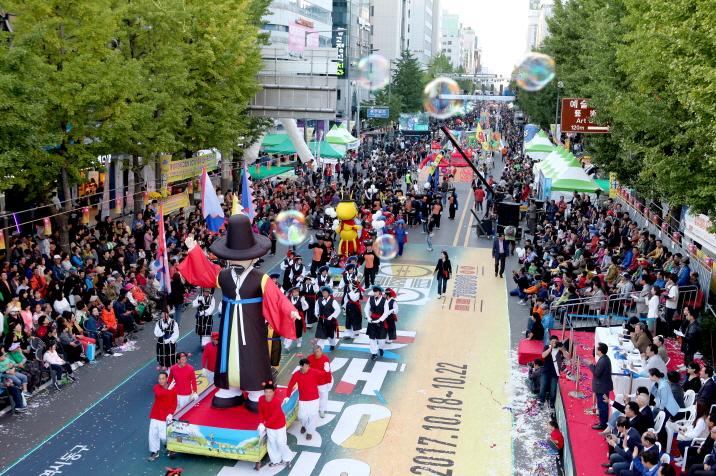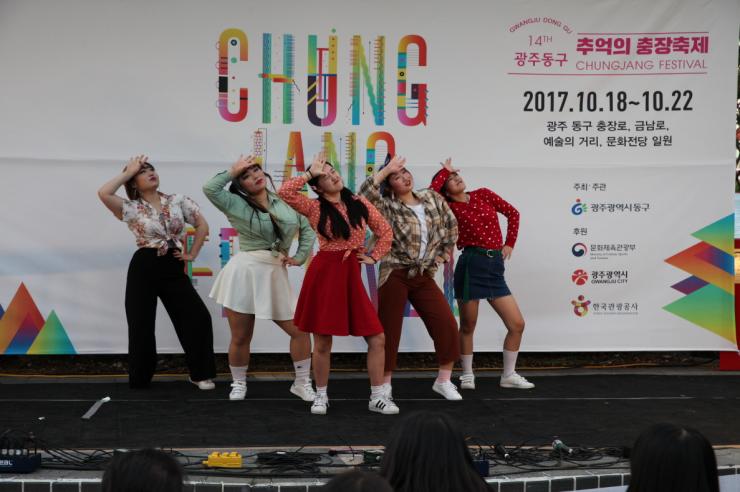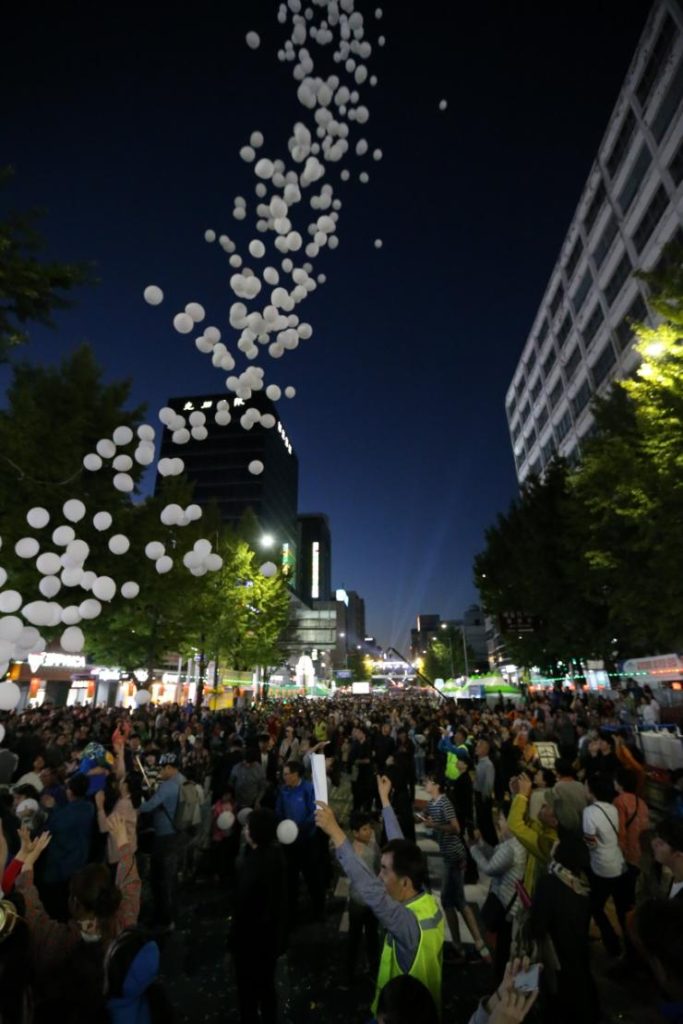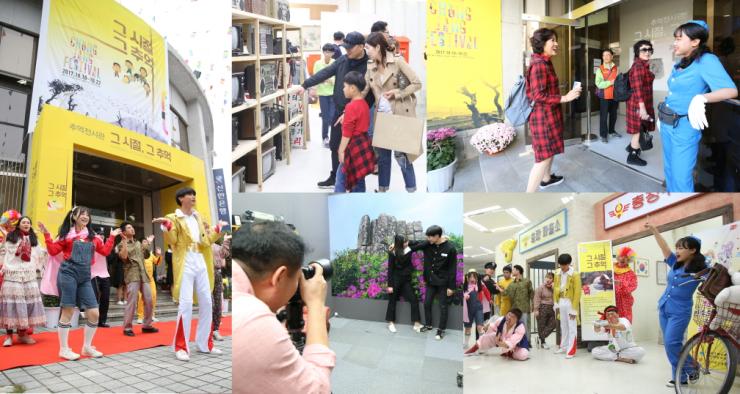7080 Chungjang-ro Recollection Festival
Written by Marion Gregory
Photographs courtesy of Chungjang-ro Festival Organizing Committee
Originally published November 2010 #105
On a typical day Chungjang-ro attracts shoppers with its storefronts and coffee shops. Usually,there’s a group of schoolchildren trying to fit in some freedom before going to academy, a lady selling her cheap toys at the corner, and a snack cart sitting at the end of the road. Gwangju’s downtown has a sleepy atmosphere during the week and only really comes to life on the weekend when the people of the city come out to unwind.
Gwangju has been expanding over the past few decades and many people have moved to the suburbs, leaving downtown as just a shadow of what it was only 40 years ago. Back in the 1970s and 1980s, this area of town was thriving, sheltering the heart of Jeollanamdo’s culture and economy. Known as Gwangju’s Myeong-dong, it was the place you came to for any sort of fun. It was also the place to protest the dictators in power at the time.
“The street [has a reputation] of self-respect for justice and manners in Gwangju but [it is] also the traditional cultural road of Gwangju [for] youth, fashion, and foods,” said Tae Myung-yu, a councillor of Dong-gu. In an effort to recapture the aura of old downtown, Gwangju volunteers come together in February each year to create a homecoming party fit for the once-famous area.

This year was no exception, as the seventh annual 7080 Chungjang Recollection Festival kicked off on October 5. The area was packed with visitors from the moment the opening parade started until the last hanbok-clad performer graced the Post Office Stage on October 10. There were many things to see and do, including watching performances on any of the five stages, shopping at the international market, and playing traditional games along the main road.
“Experiencing the festival is the key to enjoying it. This is not a festival to just watch,” said Jung Hyung-gyoun, the festival’s organizer. “Any memories made here will add to the history of memories of the Chungjang area that we are celebrating during the festival.”
The centrepiece of the festival’s displays was the exhibition hall, situated near the Dong-gu district office. Highlighting what life was like in the 1970s and 1980s, the hall was transformed into a streetfront from the period, including a house, a barber shop, a school room, and a restaurant. Actors enhanced the experience as they wandered in and out of displays, encouraging visitors to take part in the perpetual play that was happening inside each of the buildings.

Outside the exhibition hall, it was impossible not to be at least a passive participant as one pushed through the crowds that filled the busy streets. The main road held three stages where Korean cultural dances and songs were performed alongside contemporary pieces.
Jeollanamdo’s farming culture was also showcased, with a rice harvest dance performed amongst fake riceplants. The warmth of the country was on display as the band and dancers wound their way through the fake rice field.
A fourth stage was located near the post office, where international artists performed. Keeping the crowd roaring were dancers from India, bands from all around the world, and Korean comedy troupes among others. If one stage was empty, all you had to do was walk down the block to find another quality show.

Further down the street was an international market consisting of tents displaying the foods and goods of a handful of countries. Some of the booths seemed more focused on sales than on displaying a country’s culture, but these were balanced out by the warm welcome of others. A highlight was the fez-donning Turkish men who earnestly persuaded customers to try out a kebab with meat from their delicious-looking rotisserie. If you wanted to keep to Korean food, outdoor restaurants were set up in every non-crowded pathway, just as they once were in the 1970s. Interlaced through all of the festivities was a sense of pride: every vendor was grinning, every ajumma was dancing if she had the room, and it seemed that everyone in the city was there to party. If this is how Gwangju celebrates the spirit of its past, then I can’t wait to see what it will be like when the Asia Cultural Center is completed in 2014.




